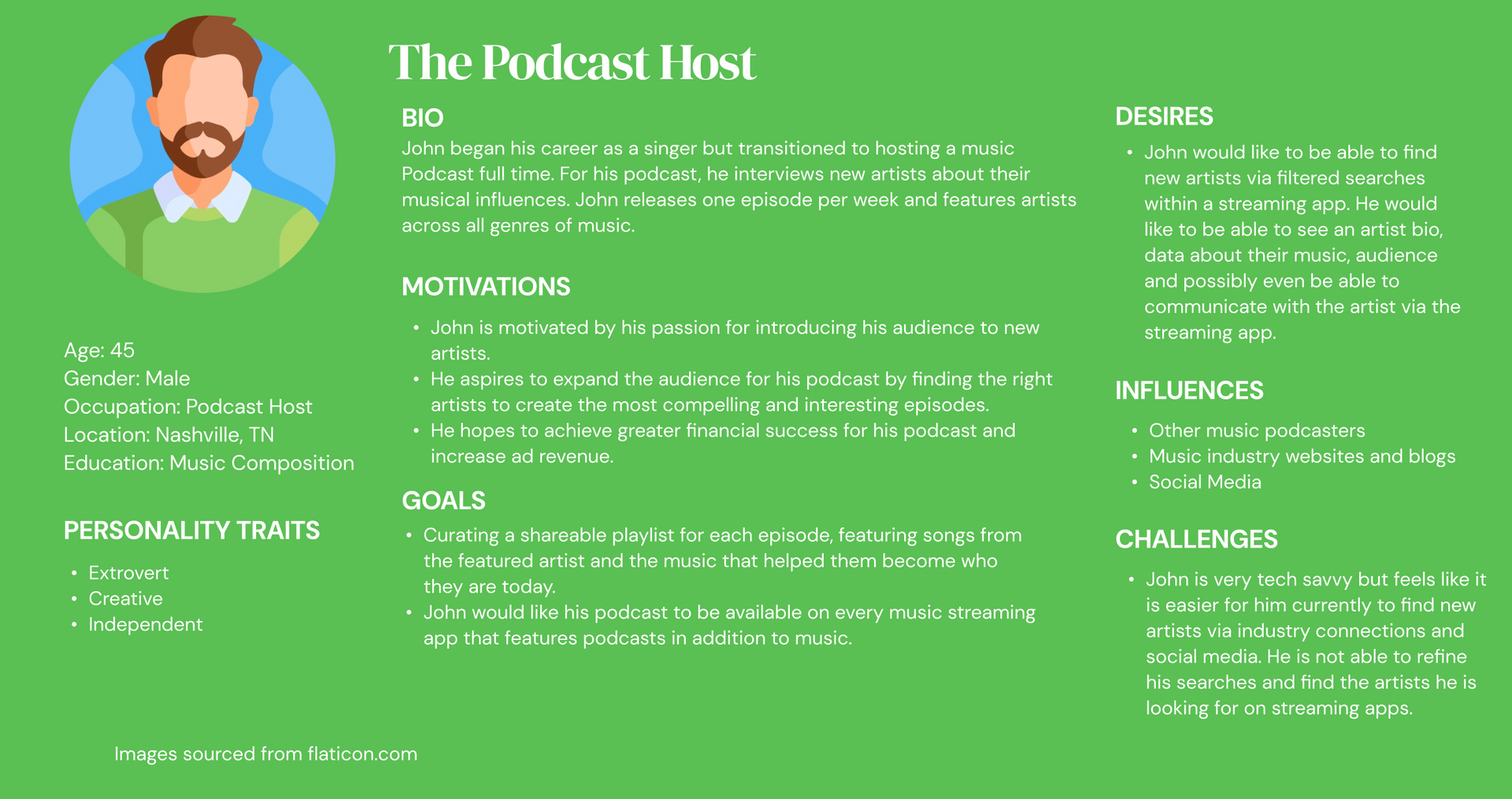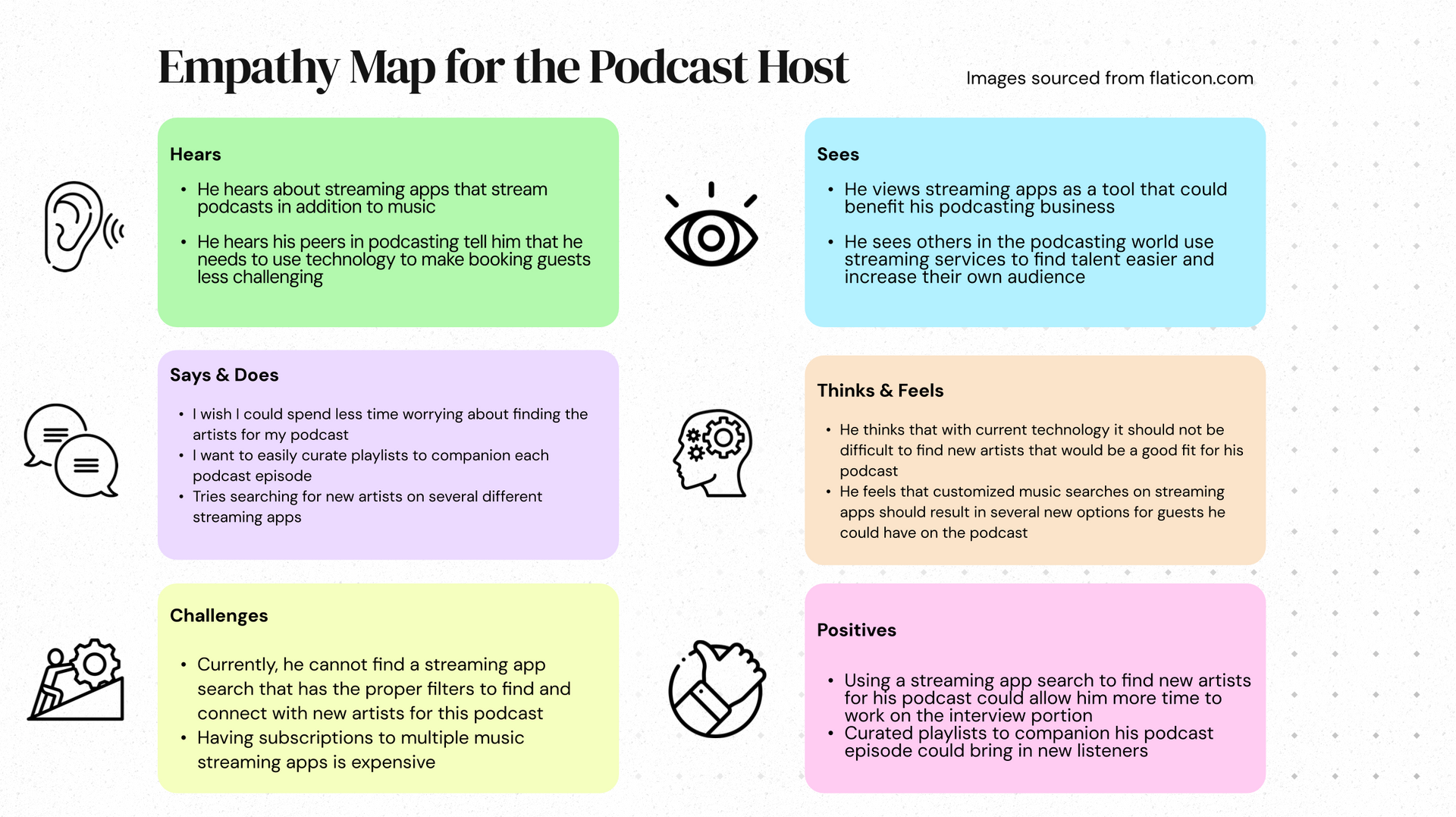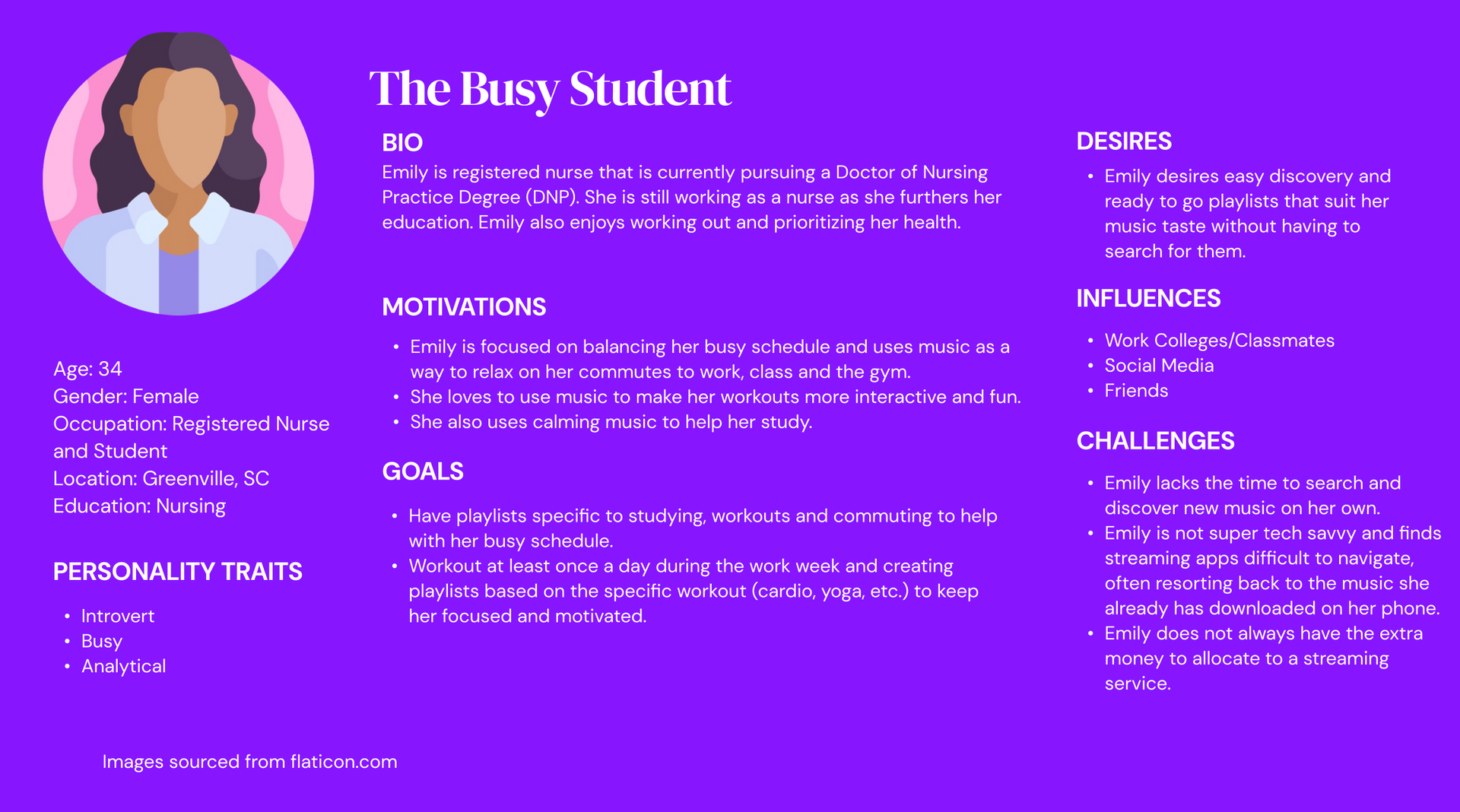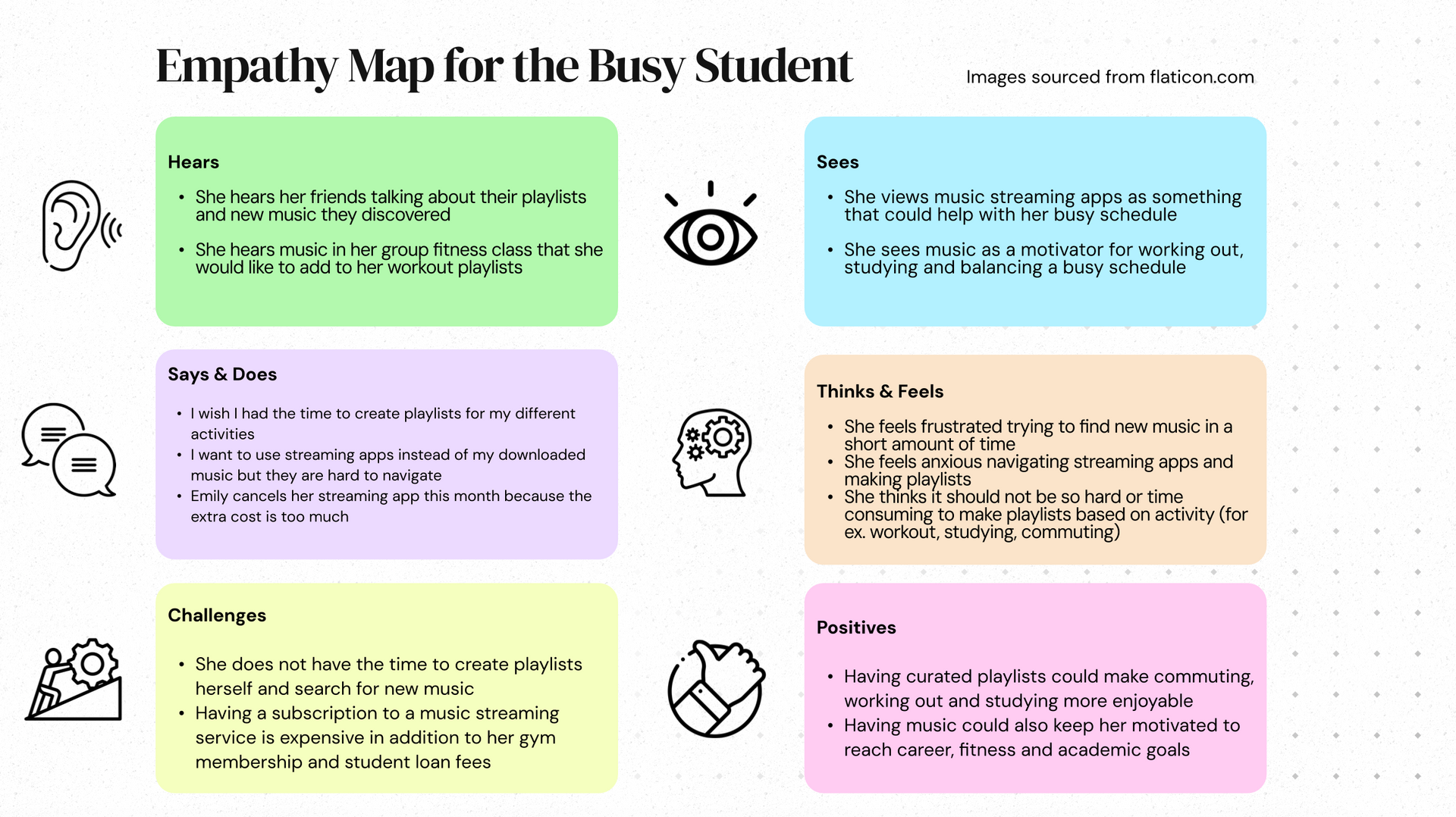Role:
User Research
Team:
1 Researcher
Timeline:
2 Weeks
Jan 2025
Tools:
Figma
Figjam
Google Forms
Draxlr
Project Overview
Project Overview: Mapping Listener Needs and Behaviors
Research Project | UT Austin Post Graduate Program in UX Design
This user research study explored how individuals interact with music streaming apps, focusing on usage patterns, preferences, and decision-making factors. Among the 13 respondents, most were aged 30–34 and identified as female, representing a diverse range of occupations. The majority used streaming apps daily, with Spotify and Apple Music emerging as the preferred platforms. Cost was the most influential factor in choosing a service, followed by music selection and personalized recommendations. Users typically listened to music in the afternoon or morning, primarily in the car or at home. When discovering new music, most relied on app-generated suggestions and social media, and they tended to search by specific songs rather than artists or genres. These findings highlight a strong desire for affordability, ease of use, and emotionally resonant content, while also revealing pain points around navigation and playlist creation.
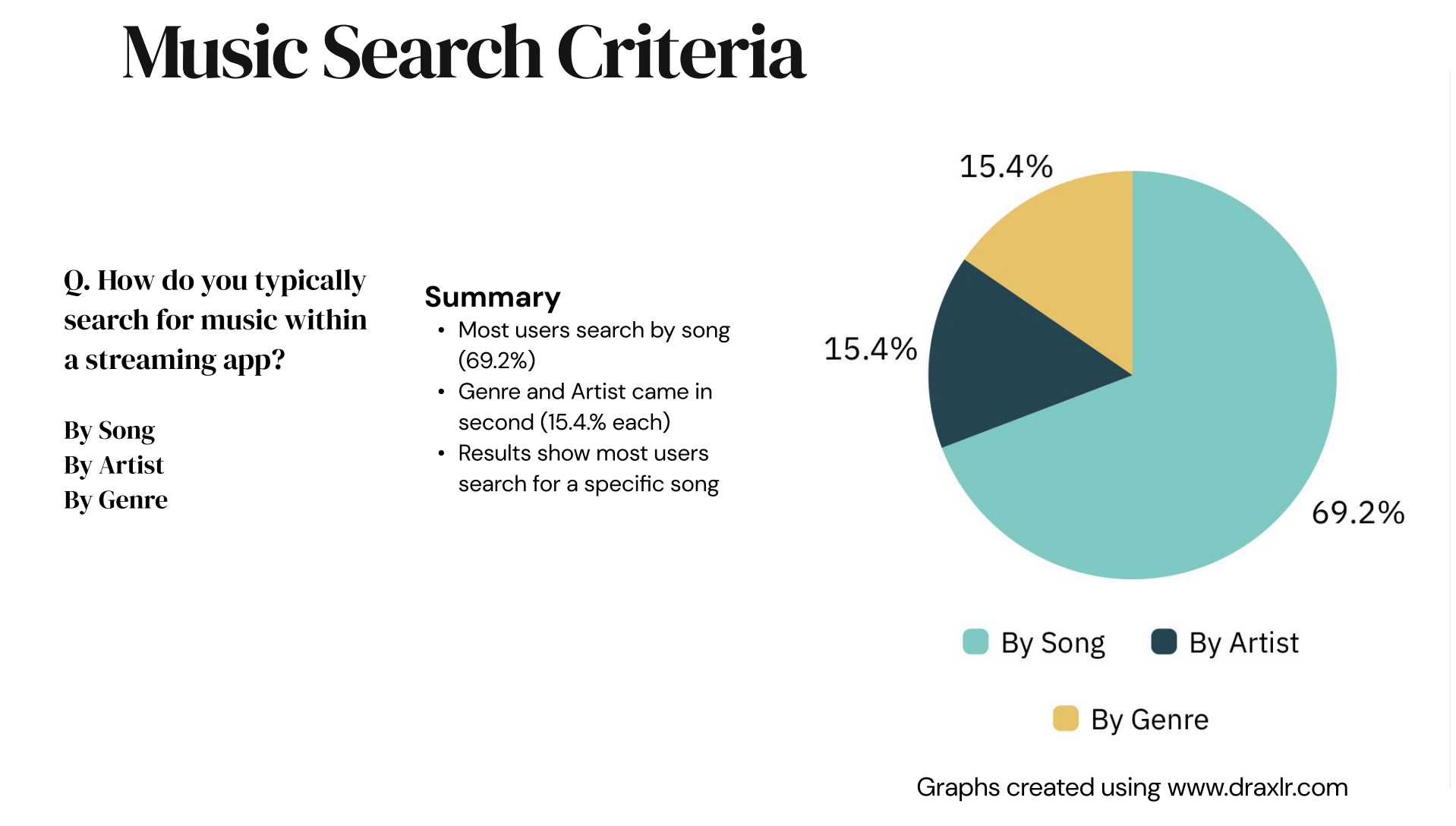
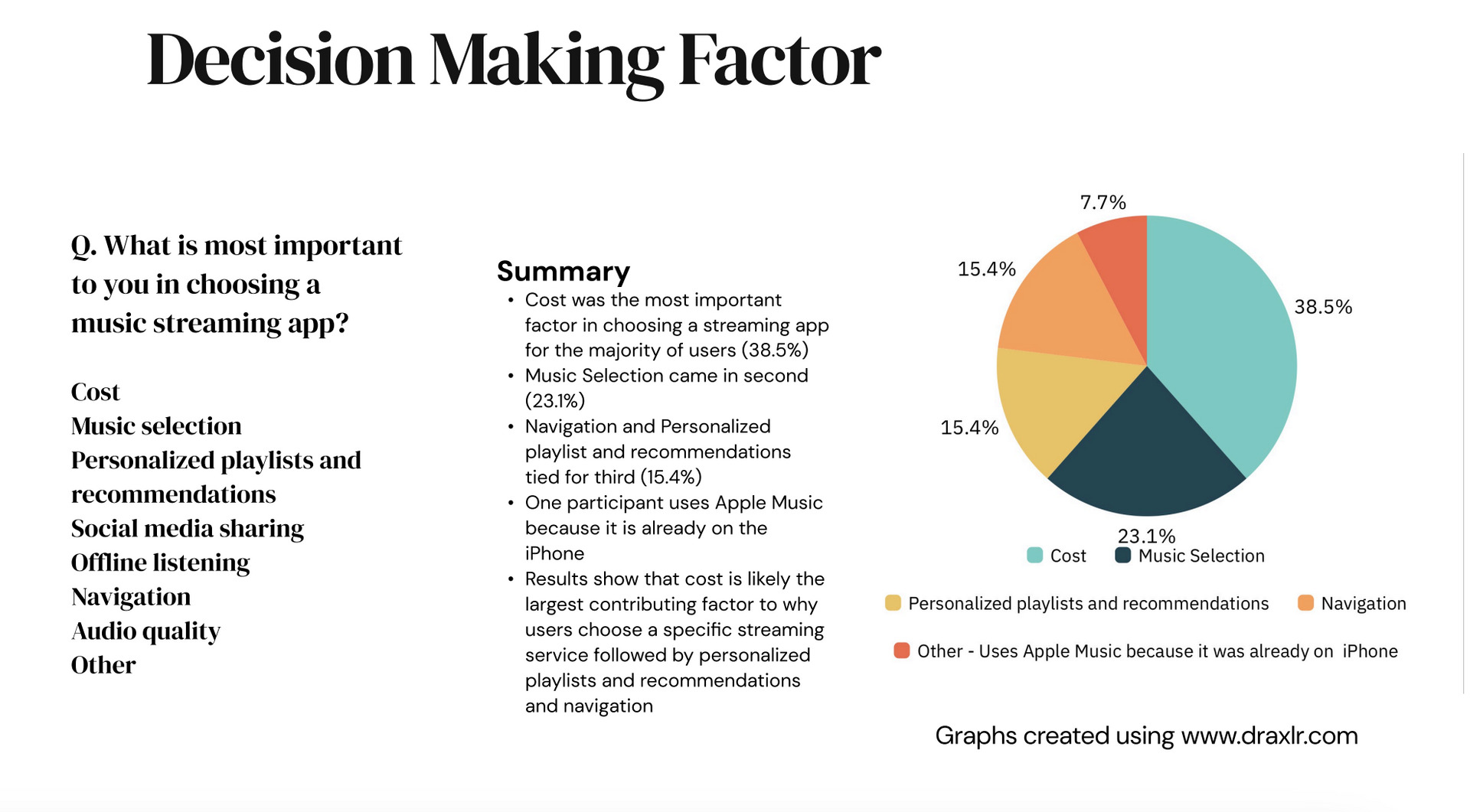
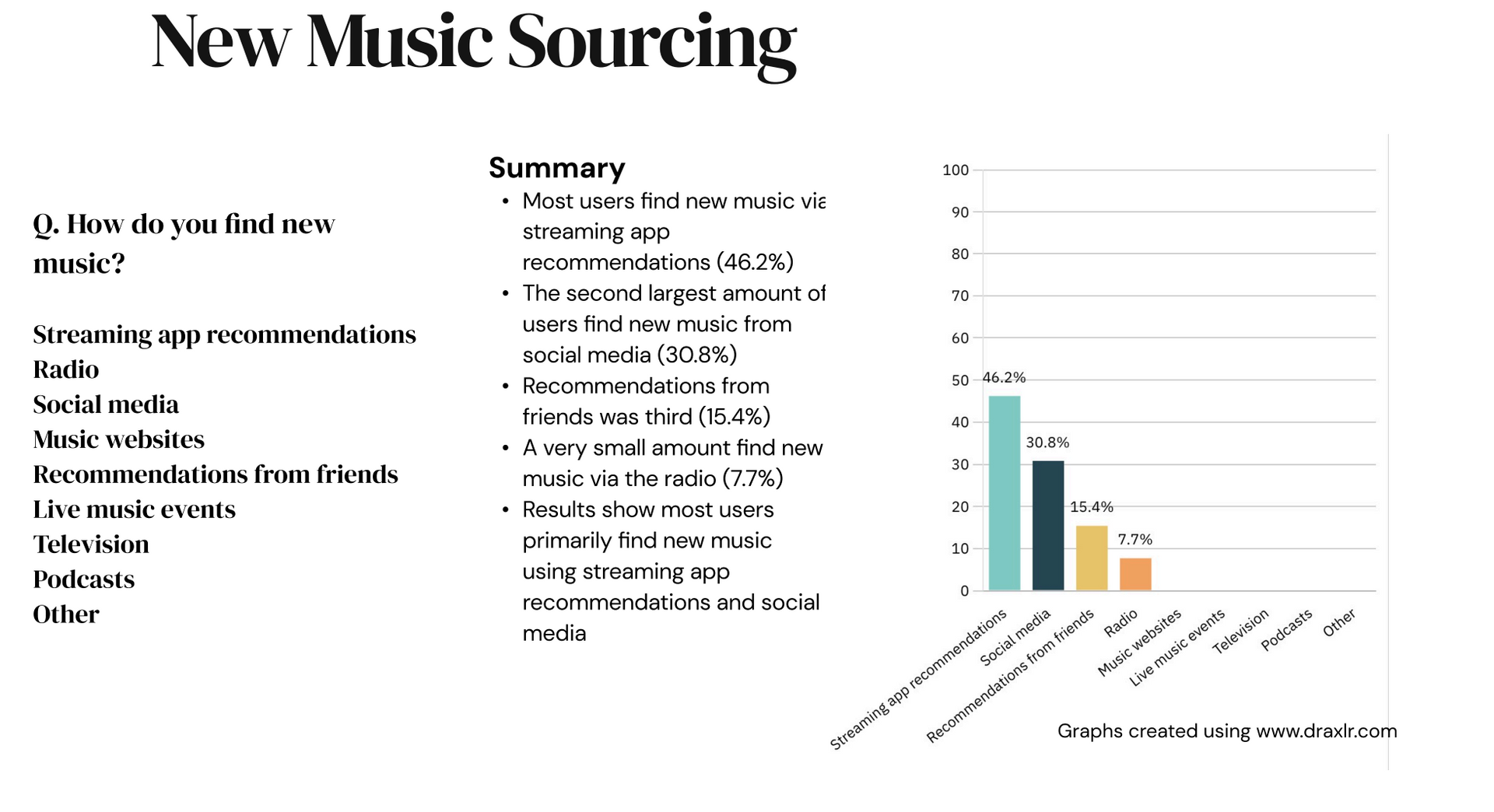
User Personas & Empathy Maps
Two personas were developed to illustrate contrasting user needs and emotional drivers. John, a 45-year-old podcast host from Nashville, uses streaming apps to discover new artists and curate playlists for his episodes. He’s tech-savvy but frustrated by the lack of refined search tools and the cost of maintaining multiple subscriptions. He views streaming platforms as potential business assets but feels they fall short in supporting his creative workflow. Emily, a 34-year-old nurse and doctoral student from Greenville, uses music to manage her busy schedule, especially during commutes, workouts, and study sessions. She desires curated playlists tailored to her activities but struggles with app navigation and affordability. Both personas underscore the need for emotionally intelligent design—tools that simplify discovery, reduce cognitive load, and align with users’ lifestyles and motivations.
What I Learned
This project helped me understand how emotional context shapes digital behavior. I learned that even in everyday activities like music listening, users want personalization, simplicity, and tools that support their lifestyle goals. Designing with empathy, especially for users who are short on time or less tech-savvy, is key to creating meaningful and accessible experiences.
